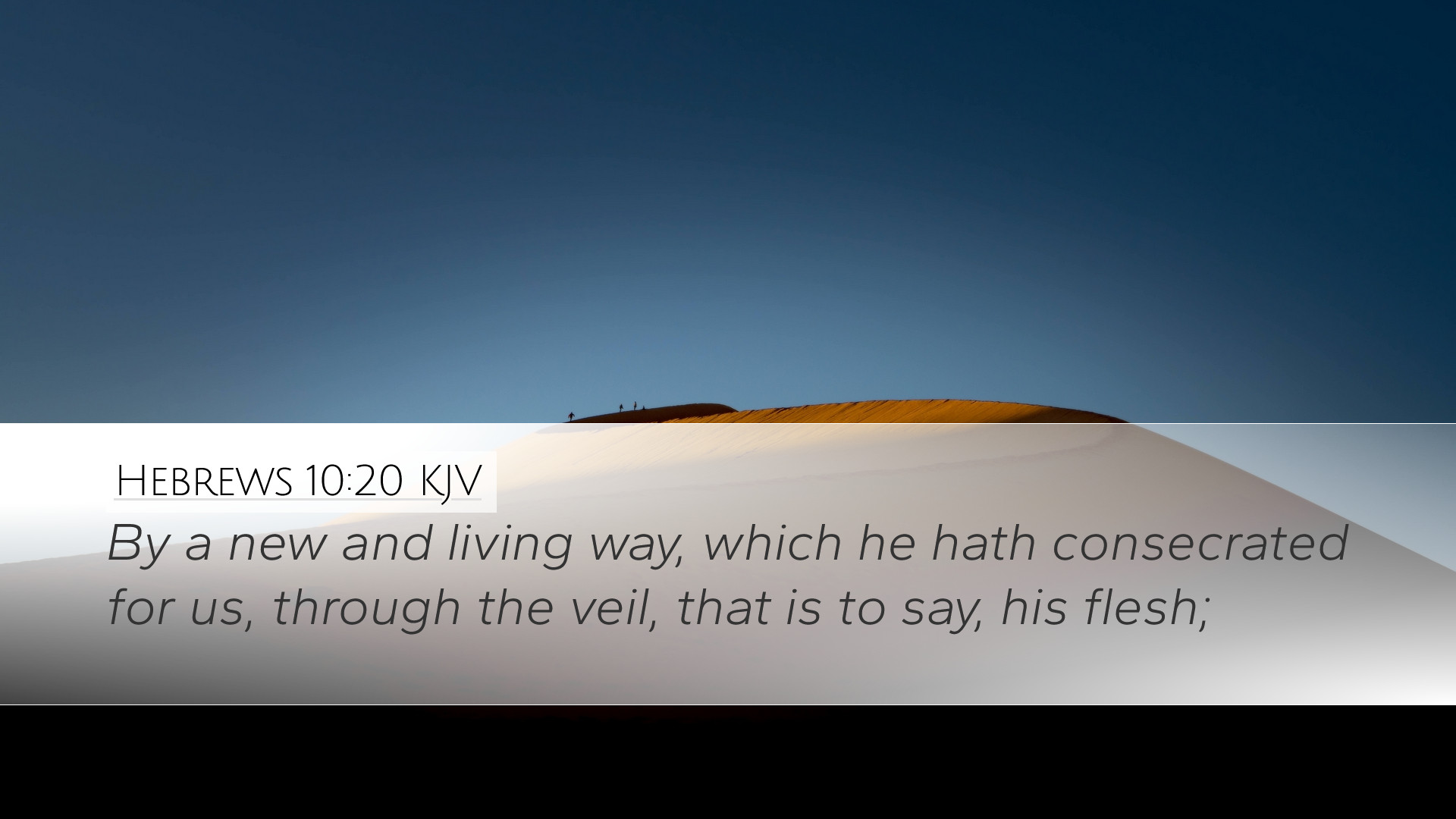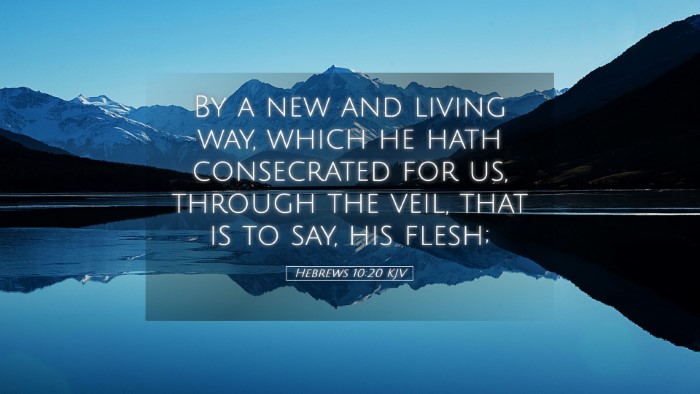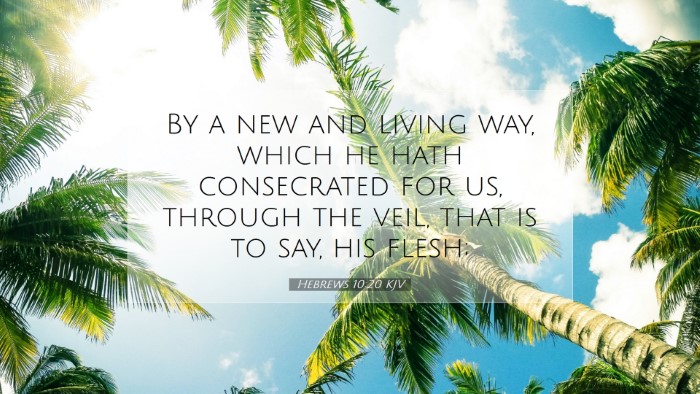Commentary on Hebrews 10:20
Verse: "By a new and living way which he hath consecrated for us, through the veil, that is to say, his flesh."
Introduction
This verse in Hebrews encapsulates the profound theological implications of Christ’s sacrifice and the new covenant established through His flesh. It serves as a pivotal point in understanding the shift from the old sacrificial system to the ultimate sacrifice made by Jesus. The imagery used in this passage enhances the spiritual significance of Christ's role as the mediator between God and humanity.
Key Themes
- New and Living Way: The term "new" signifies a fresh and transformative approach to accessing God, while "living" emphasizes the vitality and permanence of this way, as it is rooted in the resurrection of Christ.
- Consecrated: The act of consecration illustrates how Jesus has set apart this new way through His suffering and sacrifice, providing believers with direct access to the Father.
- The Veil: The veil in the temple symbolized separation from God's presence; Christ’s flesh being likened to this veil suggests that His bodily sacrifice has removed barriers between humanity and God.
Commentary Insights
Matthew Henry's Commentary
Matthew Henry emphasizes that the "new and living way" is established by Christ’s death and resurrection. He notes that this signifies the end of the inadequate old covenant sacrifices, replaced by the perfect sacrifice of Jesus. This transition allows believers to approach God boldly, a privilege that was previously limited to the High Priest.
Albert Barnes' Notes on the Bible
Albert Barnes elaborates on the implications of the veil, indicating that Jesus' flesh serves as the means through which believers can enter into communion with God. He highlights that this access is not only a privilege but also a divine invitation to experience a relationship with the Creator, made possible through Christ’s sacrifice.
Adam Clarke's Commentary
Adam Clarke provides insight into the "new way" as compared to the outdated rituals of the Old Testament. He stresses the importance of faith in this new covenant, noting that it is not merely a physical pathway, but a spiritual journey inviting believers to engage in a transformative relationship with God. Clarke also emphasizes the living aspect of this way, as it continues to be relevant and active within the lives of believers.
Theological Reflections
Hebrews 10:20 presents a profound shift in the understanding of access to God. The concept of a veil is rich in symbolism, representing the separation caused by sin. Through His sacrifice, Christ removes this barrier, inviting believers into a direct relationship with God. The significance of the term "living" echoes the notion that faith in Christ is dynamic and life-giving, urging believers towards continual growth and renewal.
Conclusion
In conclusion, Hebrews 10:20 encapsulates the essence of the Christian faith – a new and living way to God through Jesus Christ. The insights from commentaries by Henry, Barnes, and Clarke provide a robust understanding of this transforming verse. As pastors, students, and theologians contemplate this scripture, they are reminded of the depth of access afforded to them through Christ’s sacrificial love.


